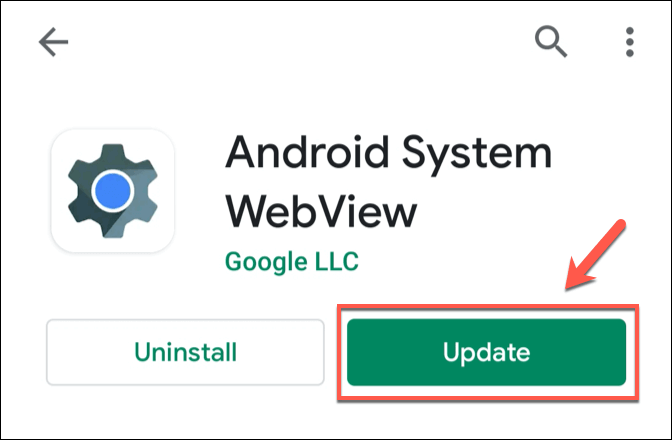

If this bug affected you, having a lot of your apps not working may not have seemed so great. This really shows why the system that Google has in place here is so great, and how so many other apps depend on it working correctly.
#ANDROID SYSTEM WEBVIEW ANDROID#
The good news is that it was quickly patched, and as long as you've updated Chrome and the Android WebView "app," everything is good to go once again. It didn't affect everyone, and there seems to be no rhyme or reason to explain the bug.
#ANDROID SYSTEM WEBVIEW UPDATE#
Source: Jerry Hildenbrand / Android CentralĪ lot of apps stop working, as we saw on March 22, 2021.Īn update for the Android System WebView (you update this particular system component through Google Play) turned out to be a little funky that afternoon, and the result was apps that depended on the Android WebView could no longer display the content they needed. Most modern operating systems have a similar way to display dynamic web content inside of an application. With Google providing a system-wide method to grab those slices of the web, it can maintain standards and everything can be kept up to date by Google rather than every developer fending for themselves. It would be incredibly difficult to build a web service and a corresponding app that was always up to date without using a slice of the actual web page for the service. That makes the Android WebView perfect for something like a Reddit app or your Gmail because all you need to do to see any new or changed content is to refresh the page.
#ANDROID SYSTEM WEBVIEW CODE#
This code doesn't need to know what's on the web address being used and just renders the content the same way any web browser would, including scripts.ĭoing this means a developer can point a window inside of their app to a web URL, and that URL can contain dynamic content that's updated outside of the app itself. What makes it a great idea is how easy it is to use.Ī developer can add the WebView activity to an app with three short lines of code, ask for permission to use the internet, and open any web content they like with just a few more lines of code. The Android WebView is a slice of code that lets a developer open web content inside of their app like described above. It's easy, it works, it is much lighter on system resources than opening the same information in Chrome, and it saves developers a lot of time because they don't have to build this system out on their own. Think of the Android System WebView as a Chrome tab without all the extra junk Chrome has going on like synchronization or a set of extensions that use computational power. Rather than having every app use its own built-in web browser that can render the same way Google Chrome's blink engine does, Google has provided a built-in system component that just works when it's working, that is. Plenty of apps and services will work just fine in Chrome through the appropriate site, but usually, having an app makes for a better user experience.

It would be easy to make an app that's really nothing except a web shortcut to, but having a dedicated app makes for better notifications, and some of Android's other tools can be incorporated by using app permissions. WebApps can be great, but a dedicated app usually offers more features. Of course, this works from any desktop web browser, too. It looks a little different than the Gmail app does, but all the content is in place.

You can easily picture this yourself by opening the Chrome browser and visiting where you'll see the URL change as you're directed to a web app where all your email lives. Pretty much every single one of Google's services is web-based, your social media is all hosted on a web server, and even many games are played through the web and need some component that acts as a web browser to work properly. A lot of the apps you find in the Google Play store need to show you something from the internet.


 0 kommentar(er)
0 kommentar(er)
